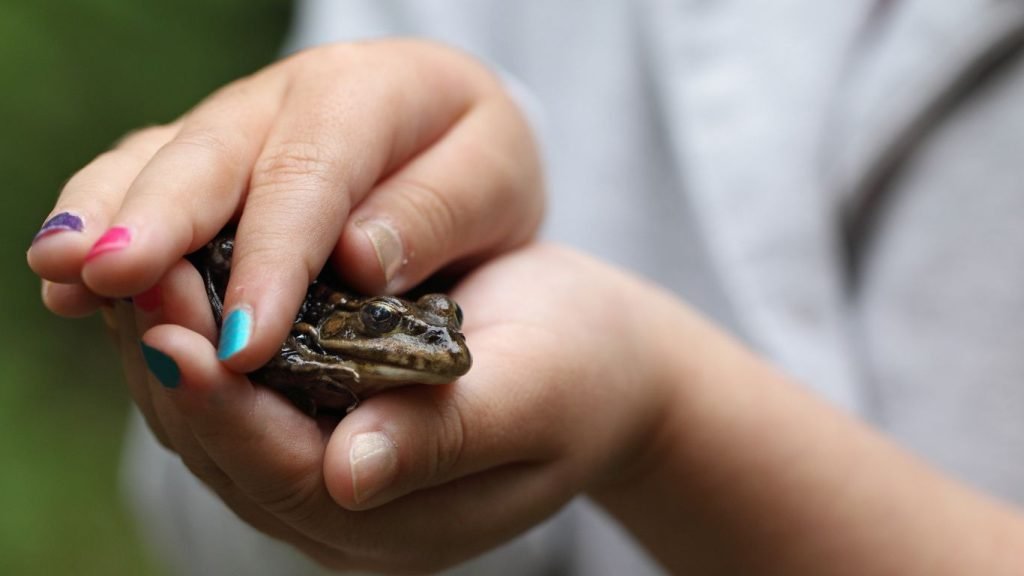Amphibians, like frogs, can make interesting and unique pets. While they may not be companion animals in the traditional sense, they can still be a rewarding and low-maintenance pet option. To ensure the health and well-being of your pet frog, it’s important to know how to take care of a frog as a pet. Different species of frogs have specific requirements, so it’s essential to research and understand the needs of the particular frog species you choose. Additionally, it’s important to follow any legal requirements and regulations for keeping frogs as pets in your area.
Keeping a frog as a pet requires attention to detail and a commitment to providing the best care possible. Follow these guidelines to ensure your pet frog stays happy and healthy.
How to Take Care of a Frog as a Pet
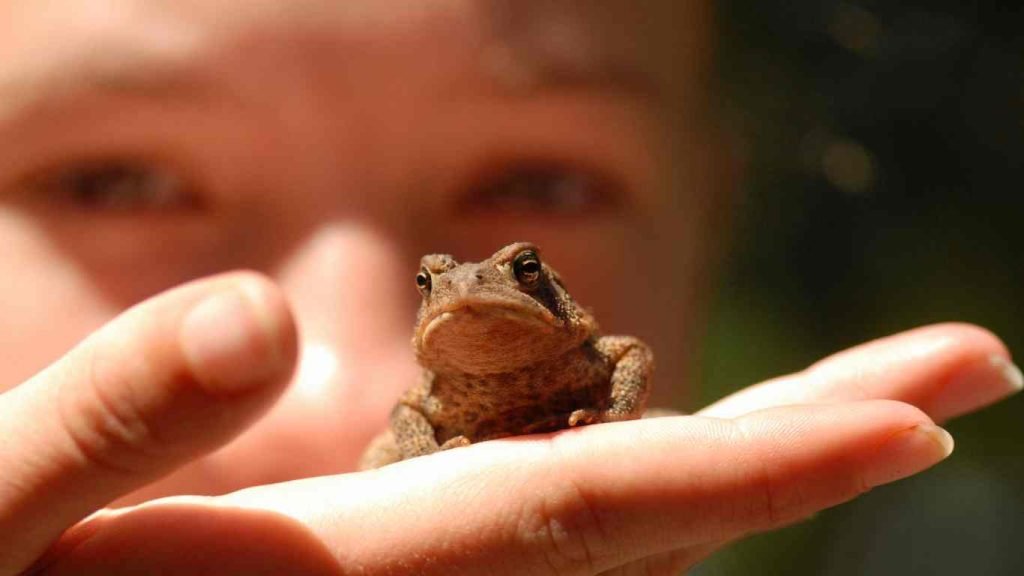
Legislation and Licenses for Keeping Frogs as Pets
If you’re considering keeping a frog as a pet, it’s important to familiarize yourself with the legislation and licensing requirements in your area. This is especially crucial if you live in a country like Australia, where frogs are protected species.
In countries with strict regulations, it is illegal to capture frogs from the wild and keep them as pets without the proper permits and licenses. To ensure the welfare and conservation of frog species, authorities often require that pet frogs are captive-bred.
If you’re interested in keeping certain species of frogs, you may also need to obtain a license from the appropriate government department. These licenses ensure that pet owners have the knowledge and resources to provide the necessary care for their frogs.
“It is important to research and understand the regulations in your area before obtaining a pet frog to ensure you are in compliance with the law.”
By adhering to legislation and licensing requirements, you contribute to the preservation of frog populations and ensure the responsible ownership of these captivating amphibians.
| Country | Legislation | Licensing Requirements |
|---|---|---|
| United States | No federal legislation specifically for pet frogs; regulations may vary by state | Varies by state; consult local authorities for specific requirements |
| Australia | Protected species; permits required to keep frogs as pets | License required; captive-bred frogs typically permitted |
| United Kingdom | No specific legislation for pet frogs | No licensing requirements |
| Canada | No federal legislation specifically for pet frogs; regulations may vary by province | Varies by province; consult local authorities for specific requirements |
It is important to note that the table above provides a general overview of legislation and licensing requirements and may not be comprehensive or up to date. Always research and consult local authorities for the most accurate and current information regarding the keeping of frogs as pets in your area.
Creating the Ideal Housing and Environment for Your Frog
Providing a suitable housing and environment is crucial for the health and well-being of your pet frog. To create an ideal habitat for your frog, you need to consider its natural requirements and replicate them in a captive setting. This includes creating an escape-proof enclosure that closely mimics your frog’s native environment.
One important aspect of creating the ideal housing for your frog is choosing the right substrate. Using materials like moss and rocks can help simulate the natural ground cover found in the wild. These substrates also provide hiding spots and a comfortable surface for your frog to rest on.
Another important component is incorporating live plants and branches into the enclosure. Not only do plants enhance the aesthetic appeal of the habitat, but they also provide your frog with places to climb and hide. Ensure that the plants you choose are non-toxic to frogs and can thrive in the specific environmental conditions required by your frog species.
Maintaining proper temperature and humidity levels is essential for the overall well-being of your frog. Different species have varying temperature and humidity requirements, so it’s crucial to research and understand the specific needs of your frog. Use a thermometer and hygrometer to monitor these parameters regularly and make adjustments as necessary.
Regular cleaning and maintenance of the enclosure are necessary to keep your frog and its environment healthy. Removing waste matter, changing water, and cleaning any accessories or decorations will help prevent the buildup of harmful bacteria and ensure a clean living space for your frog.
To summarize, creating the ideal housing and environment for your pet frog involves providing suitable substrates, incorporating live plants and branches, maintaining proper temperature and humidity levels, and ensuring regular cleaning and maintenance. By designing a habitat that closely resembles the frog’s natural environment, you can help your pet frog thrive and live a healthy, fulfilling life.
Maintaining the Correct Temperature and Lighting for Your Frog
Frogs, like all amphibians, have specific temperature requirements that are essential for their health and well-being. In order to provide the ideal climate for your pet frog, it’s important to understand their temperature needs and create a suitable environment.
Depending on the species of frog you have, the temperature range can vary. The general guideline is to maintain a temperature between 16 to 21 degrees Celsius (60 to 70 degrees Fahrenheit). This temperature range allows frogs to thrive and ensures their physiological processes function optimally.
Additionally, proper humidity levels are crucial for your frog’s well-being. Most frogs require a humidity range of 75 to 80 percent, which simulates their natural habitat and supports their respiratory functions.
| Temperature | Humidity |
|---|---|
| 16 to 21 degrees Celsius | 75 to 80 percent |
To maintain the correct temperature and humidity levels, consider using a thermometer and hygrometer in your frog’s enclosure. Monitoring these levels regularly will help you ensure that the conditions are optimal for your pet.
Moreover to temperature and humidity, proper lighting is also essential for your frog’s well-being. Frogs have natural day-night cycles, and replicating this in their enclosure is crucial for their physiological and behavioral health.
During the warmer months, it’s important to provide a 12-hour light cycle, simulating longer days. This can be achieved using a natural light source or a reptile-specific UVB light. During the winter months, it’s recommended to reduce the daylight hours to mimic the shorter days.
Proper lighting not only helps regulate your frog’s internal clock but also facilitates their ability to metabolize calcium, which is necessary for overall bone and muscle health.
“Creating the optimal temperature and lighting conditions plays a significant role in the well-being of your pet frog. By maintaining the appropriate temperature range and providing the right lighting conditions, you can ensure their physiological and behavioral needs are met.”
Remember, different species of frogs may have slightly different temperature and lighting requirements. Always research and understand the specific needs of your frog species to provide the best care possible.
Zoo Med Aquatic Frog & Tadpole Food
$2.29 in stock
Feeding Your Pet Frog a Nutritious Diet
Proper nutrition is essential for the health and well-being of your pet frog. Most frogs thrive on a diet of live invertebrates, such as insects, crickets, and worms. These small creatures provide the necessary protein and nutrients that frogs need to grow and stay healthy.
The frequency of feeding your frog will depend on its size and activity level. Smaller, more active frog species will require daily feedings, while larger and less active frogs may only need to be fed once a week. It’s important to observe your frog’s behavior to determine its feeding schedule.
When feeding your pet frog, ensure that the prey items are properly gut-loaded. This means that the insects or worms have been fed a nutritious diet themselves before being offered to your frog. Gut-loading increases the nutritional value of the prey, providing a more balanced meal for your pet.
Additionally, it’s recommended to dust the prey with a powdered vitamin supplement specifically formulated for frogs. This helps ensure that your pet receives all the necessary vitamins and minerals it needs to thrive. Consult with a veterinarian or experienced amphibian keeper to determine the best vitamin supplement for your frog.
Tip: Always provide clean, fresh water for your frog to stay hydrated. Some frog species may also benefit from occasional feeding of small aquatic invertebrates or commercially available frog pellets, but these should not be the sole source of nutrition.
Feeding Schedule Example for Different Frog Sizes:
| Frog Size | Feeding Frequency |
|---|---|
| Small and Active (e.g., African Dwarf Frog) | Daily feedings |
| Medium-sized (e.g., White’s Tree Frog) | Feed every 2-3 days |
| Large and Less Active (e.g., Pacman Frog) | Feed once a week |
Moist Pellet Sinking Diet for Frogs & Small Amphibians
Remember to always observe your frog’s behavior and adjust its feeding schedule if necessary. Overfeeding can lead to obesity and other health issues, while underfeeding can result in malnourishment. Finding the right balance is crucial for keeping your pet frog healthy and happy.
Regular Cleaning and Maintenance of the Frog’s Habitat
Frogs are delicate creatures with sensitive skin, making a clean and hygienic habitat crucial for their well-being. Proper cleaning and maintenance help prevent bacterial and fungal infections, ensuring your pet frog stays healthy and happy.
Regular spot-cleaning is necessary to remove waste matter from the enclosure. This includes removing any uneaten food, feces, or dead insects. Spot-cleaning should be done as soon as you notice any waste to maintain a clean environment.
Changing the water dish frequently is also essential. Frogs rely on water for hydration and to regulate their body temperature. Dirty water can harbor bacteria and pose a risk to your frog’s health. By providing fresh, clean water regularly, you ensure that your frog has access to a safe and suitable water source.
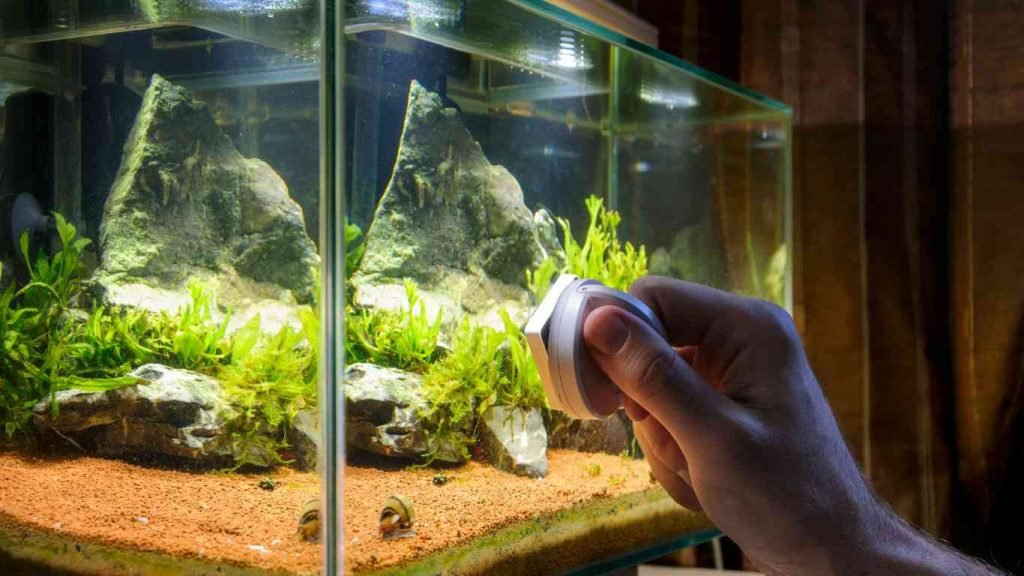
When cleaning the enclosure, avoid using harsh chemicals or cleaning agents. Frogs are sensitive to chemicals, which can irritate their skin and negatively impact their health. Instead, opt for mild, frog-safe cleaning solutions or natural methods, such as vinegar or diluted hydrogen peroxide.
As frogs have a highly permeable skin, they are particularly sensitive to chlorine in tap water. It’s crucial to use non-chlorinated water for their enclosure. If your tap water contains chlorine, you can dechlorinate it by using water conditioners specifically designed for aquarium use. Dechlorinating the water helps create a safe and healthy environment for your pet frog.
Proper hygiene is not only beneficial for your frog’s health but also for your own. After handling your frog or cleaning its habitat, be sure to wash your hands thoroughly with soap and water. This reduces the risk of cross-contamination and helps maintain a clean living environment for both you and your pet frog.
| Cleaning and Maintenance Tips for a Healthy Frog Habitat |
|---|
| 1. Regular spot-cleaning: Remove waste matter promptly to maintain cleanliness. |
| 2. Change the water dish: Provide fresh, clean water regularly to prevent bacterial growth. |
| 3. Use frog-safe cleaning solutions: Avoid harsh chemicals that can harm your frog’s skin. |
| 4. Dechlorinate the water: Use non-chlorinated water or dechlorinate tap water before adding it to the enclosure. |
| 5. Practice proper hygiene: Wash your hands thoroughly after handling your frog or cleaning its habitat. |
Taking the time to clean and maintain your frog’s habitat regularly is essential for their overall well-being. By providing a clean and hygienic environment, you ensure that your pet frog remains healthy, happy, and thriving.
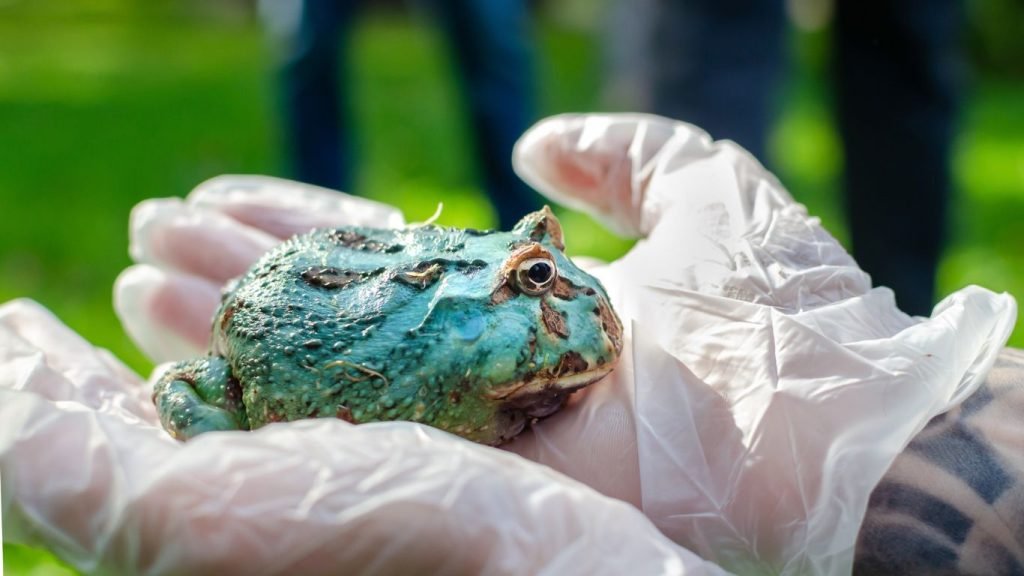
Handling and Health Concerns for Pet Frogs
When it comes to handling pet frogs, it is crucial to prioritize both their well-being and your own health. Follow these tips to ensure a safe and enjoyable interaction with your amphibian companion:
- Wash your hands thoroughly before and after handling your pet frog. This will help prevent the spread of harmful bacteria or potential irritants that could harm their sensitive skin.
- Avoid using any chemicals or substances on your hands that could be harmful to frogs. Even residues from lotions, soaps, or hand sanitizers can be harmful to their delicate skin.
- Limit the amount of handling and physical contact with your pet frog. While some frogs may tolerate gentle handling, excessive handling can cause stress and increase the risk of bacterial infections.
- Always handle your frog with wet hands or using a damp cloth. This helps maintain their skin’s moisture and prevents dehydration or damage.
- Keep in mind that different species may have varying tolerances to handling. Some frogs may prefer to be left undisturbed, while others may be more comfortable with occasional gentle interactions.
Ensuring the health of your pet frog is of utmost importance. Here are some health concerns to be aware of:
Salmonella: Like many reptiles and amphibians, frogs can carry Salmonella bacteria. These bacteria can cause serious illness, especially in young children, the elderly, and individuals with weakened immune systems. It is essential to practice proper hygiene and handwashing after handling pet frogs to minimize the risk of infection.
To keep your pet frog in good health, make sure to observe the following:
- Regularly monitor your frog for any signs of illness or distress, such as changes in appetite, lethargy, skin discoloration, or abnormal behavior.
- Consult a veterinarian with experience in amphibian care if you notice any concerning symptoms or have questions about your frog’s health.
- Maintain a clean and hygienic habitat for your pet frog to prevent bacterial and fungal infections. Regular spot-cleaning and appropriate water changes are essential.
- Provide a nutritious diet consisting of live invertebrates that are properly gut-loaded and dusted with vitamins to ensure your frog receives all the necessary nutrients.
- Monitor and maintain the temperature and humidity levels in your frog’s enclosure to create a suitable environment.
By following these guidelines and prioritizing the handling and health of your pet frog, you can enjoy a rewarding and mutually beneficial relationship with your amphibian friend.

Join Our GeoZoo Family
Subscribe to our Newsletter
Choosing the Right Species of Frog for Your Pet
When considering a pet frog, it’s crucial to choose the right species that aligns with your ability to provide the necessary care. Different species of frogs have specific care requirements, including humidity levels, temperature ranges, and environmental conditions. To ensure the well-being of your pet frog, research is key.
Consulting with a veterinarian or an experienced amphibian keeper can provide valuable insights into the best species for your situation. They can guide you on the appropriate care, feeding habits, and ideal habitat for your chosen frog. By seeking expert advice, you can make an informed decision and create an optimal environment for your pet frog.
Below is a list of popular pet frog species and their unique needs:
| Species | Care Needs | Description |
|---|---|---|
| Pacman Frog | High humidity (50-80%), temperature range of 75-85°F, wide-mouthed frogs that require a spacious enclosure. | An unusual-looking frog with a voracious appetite and a preference for cooler temperatures. |
| White’s Tree Frog | Moderate to high humidity (50-80%), temperature range of 75-85°F, arboreal species that require climbing branches. | A popular pet choice known for its friendly temperament and ability to tolerate handling. |
| Red-Eyed Tree Frog | High humidity (80-100%), temperature range of 75-85°F, need vertical space and plenty of foliage for hiding. | Iconic for its vibrant colors and expressive red eyes, but requires meticulous care to maintain humidity levels. |
| Dart Frogs | High humidity (70-90%), temperature range of 70-80°F, need a well-planted vivarium and a specific diet of small invertebrates. | Colorful and small-sized frogs that require a highly controlled environment, making them suitable for experienced keepers. |
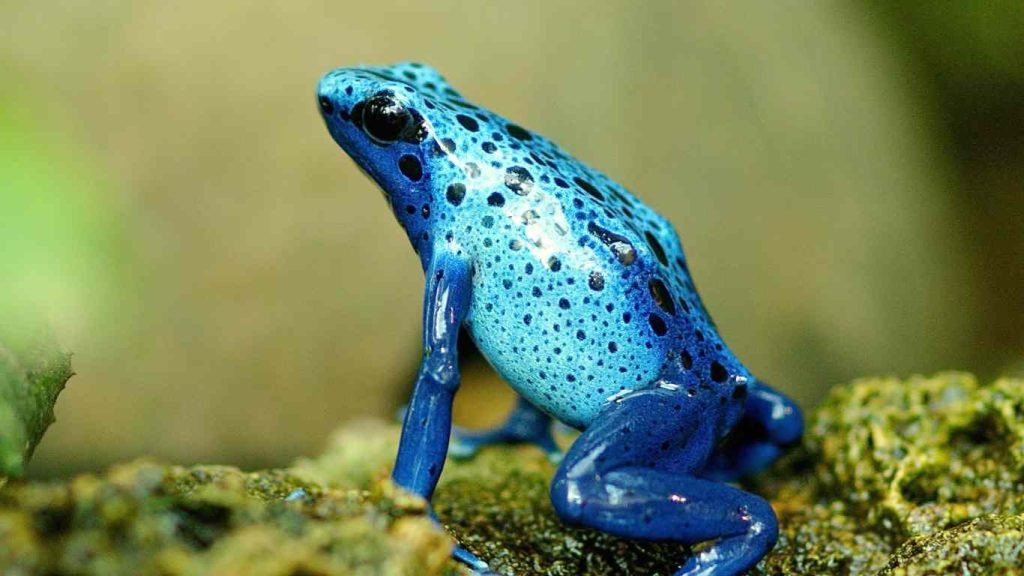
Remember that each species has its own unique care requirements, so it’s crucial to tailor your frog’s habitat and care routine accordingly.
By selecting a species that matches your capabilities and commitment, you will be better equipped to provide the ideal environment and care for your pet frog.
Legality and Ethical Considerations of Keeping Frogs as Pets
When it comes to keeping frogs as pets, it is essential to be aware of the legal requirements and ethical considerations that surround their ownership. By understanding and complying with these regulations, you can ensure that you are a responsible frog owner and contribute to the preservation of these fascinating amphibians.
Legality of Keeping Frogs as Pets
The legality of keeping frogs as pets varies depending on your location. Some countries, such as Australia, have specific laws in place to protect native frog species, making it illegal to capture wild frogs and keep them as pets without the appropriate permits and licenses.
“It’s important to research and understand the regulations in your area before obtaining a pet frog to ensure you are in compliance with the law.”
Zilla Tropical Vertical Habitat Starter Kit for Frogs
$109.95 in stock
Even in countries where the ownership of pet frogs is legal, there may still be restrictions on the species you can keep or requirements for obtaining permits. These regulations exist to prevent the illegal trade of wild frogs and protect the delicate ecosystems where they naturally reside.
Ethics of Keeping Frogs as Pets
While it may be legal to keep certain species of frogs as pets, there are ethical considerations that should not be overlooked. The impact of the pet trade on wild frog populations is a significant concern. The removal of frogs from their natural habitats can disrupt ecosystems and contribute to declines in population numbers.
Additionally, responsible ownership practices are crucial for the well-being of pet frogs. It is essential to provide appropriate housing, nutrition, and veterinary care to ensure the health and happiness of these animals. Owning a pet frog requires a commitment to their welfare, as they have specific environmental and dietary needs that must be met.
“By being informed and responsible frog owners, we can ensure the well-being of our pet frogs and contribute to the conservation of their wild counterparts.”
| Legal Considerations | Ethical Considerations |
|---|---|
| Research and comply with local regulations | Avoid contributing to the illegal pet trade |
| Obtain necessary licenses or permits | Consider the impact on wild populations |
| Ensure frogs are captive-bred and not wild-caught | Practice responsible ownership |
By understanding the legality and ethics of keeping frogs as pets, you can make informed decisions and take appropriate actions to provide a safe and sustainable environment for these captivating creatures.

The Benefits and Joys of Owning a Pet Frog
While frogs may not be traditional companion animals, they can still provide enjoyment and fascination as pets. Watching their unique behaviors and life cycle can be a source of entertainment and education. Additionally, frogs have a relatively low-maintenance lifestyle, making them a suitable pet for those with busy schedules or limited space. The relationship between a pet frog and its owner may not be the same as with more interactive pets, but it can still be rewarding in its own way.
Despite their small size, there are many advantages to having a pet frog. Here are some of the key benefits of owning a pet frog:
- Low maintenance: Unlike some pets that require constant attention and care, frogs are relatively low maintenance. They require minimal grooming and don’t need to be walked or exercised regularly. This makes them an ideal choice for individuals or families with busy lifestyles.
- Fascinating behaviors: Frogs exhibit a wide range of interesting behaviors that can provide endless entertainment. From their unique hopping and swimming movements to their vocalizations and feeding habits, observing frogs in their natural habitat can be a captivating experience.
- Educational opportunities: Owning a pet frog can be a great educational experience, especially for children. It provides an opportunity to learn about amphibians, their life cycle, and their role in the ecosystem. Caring for a pet frog can also teach responsibility and empathy for living creatures.
- Compact size: Frogs are small creatures, which means they take up very little space in your home. They can be comfortably housed in a terrarium or a small enclosure that can fit in any room. This makes them suitable for apartment dwellers or individuals with limited living space.
- Unique and aesthetically pleasing: Frogs come in a wide variety of colors and patterns, making them visually appealing pets. Their vibrant hues and intricate markings can add a touch of beauty to your living space. Additionally, the soothing sounds of a croaking frog can create a calming ambiance.
To sum up, owning a pet frog can bring a range of benefits and joys. Whether you’re captivated by their fascinating behaviors, intrigued by their educational value, or simply drawn to their low-maintenance lifestyle, a pet frog can be a unique and rewarding companion. Embrace the wonders of amphibian ownership and discover the joys that a pet frog can bring to your life.
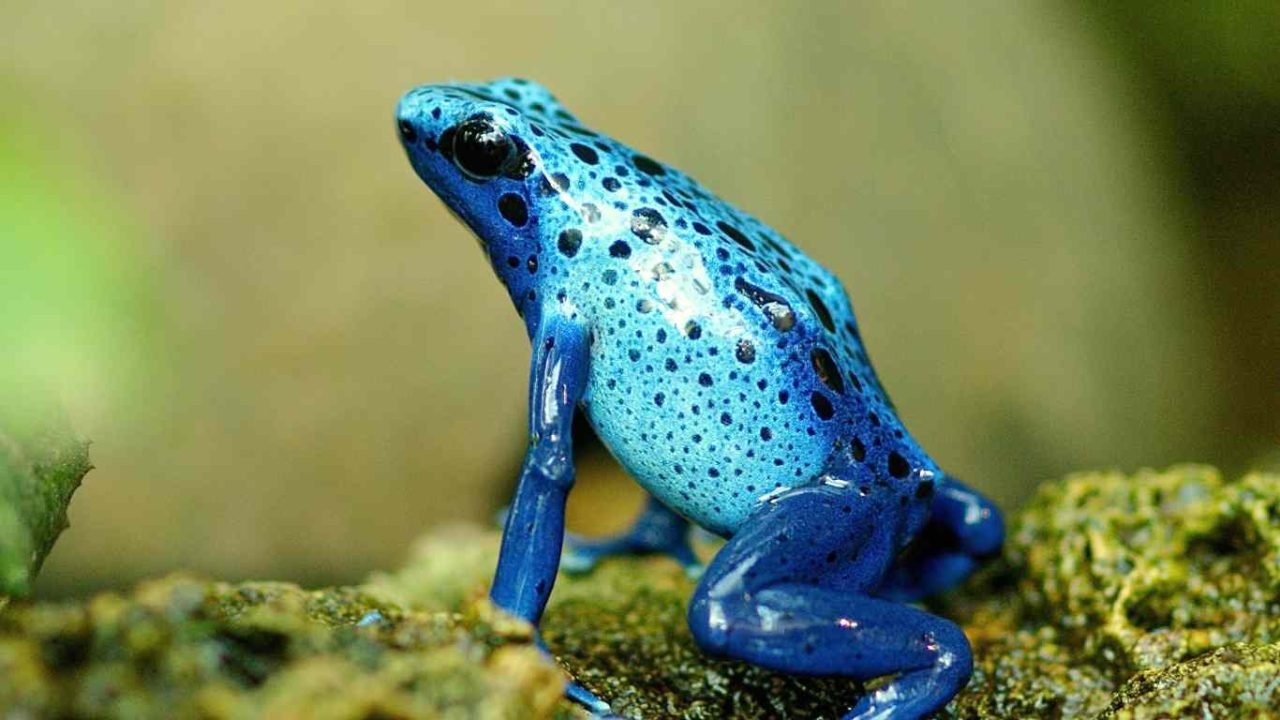
Join Our GeoZoo Family
Subscribe to our Newsletter
Final Thoughts to Taking Care of Pet Frog
Taking care of a pet frog is a unique and rewarding experience that requires proper knowledge and commitment. By providing your frog with the right environment, maintaining cleanliness, and meeting their specific needs, you can ensure their health and well-being.
Researching and understanding the requirements of your chosen frog species is crucial before bringing them into your home. Each species has its own specific needs, including temperature, humidity, and habitat preferences. By creating a suitable enclosure that mimics their natural habitat, you can help your pet frog thrive.
Regular cleaning and maintenance of the frog’s habitat are essential to prevent bacterial and fungal infections. This includes spot-cleaning waste matter and ensuring clean, dechlorinated water for their environment. Additionally, proper feeding with a nutritious diet of live, gut-loaded prey is crucial for their overall health.
While frogs may not be traditional companion animals, they offer a low-maintenance and fascinating pet option. Watching their unique behaviors and life cycles can provide entertainment and education. By being a responsible owner and meeting their needs, you can enjoy the joys of owning a pet frog and form a bond with your amphibian companion.
FREQUENTLY ASKED QUESTIONS
How do I take care of a pet frog?
To take care of a pet frog, you must provide a clean environment, regular feeding, and proper care. Research and understand the specific needs of the frog species you choose.
Can I keep a tree frog as a pet?
Yes, tree frogs can be kept as pets. However, different species have different care requirements, so research and choose a species that matches your ability to provide proper care.
What kind of housing and environment does a pet frog need?
You need to create an escape-proof enclosure that mimics your frog’s natural habitat. This may include using substrates, live plants, and branches for climbing.
What temperature and lighting should I provide for my pet frog?
The temperature and humidity levels for frogs can vary by species. Generally, frogs may require a temperature range of 16 to 21 degrees Celsius and a humidity level of 75 to 80 percent.
What should I feed my pet frog?
Most frogs eat live invertebrates like insects, crickets, and worms. The frequency of feeding depends on the size and activity level of your frog.
How do I clean my pet frog’s habitat?
Regular spot-cleaning of waste matter and changing the water dish are necessary to maintain a clean and healthy environment for your frog.
Can I handle my pet frog?
Frogs have sensitive skin and excessive handling can cause stress and bacterial infections. It is best to avoid excessive handling and practice proper hygiene when interacting with your pet frog.
How do I choose the right species of frog for my pet?
Research and understand the care requirements of different frog species before choosing one that matches your ability to provide proper care.
What are the legal and ethical considerations of keeping frogs as pets?
It is important to understand and comply with the legal requirements for keeping frogs as pets. Some countries have regulations on capturing and keeping frogs as pets, and it is important to consider the impact on wild populations and be a responsible frog owner.
What are the benefits of owning a pet frog?
While frogs may not be traditional companion animals, they can provide enjoyment and fascination as pets. Watching their unique behaviors and life cycle can be a source of entertainment and education.

